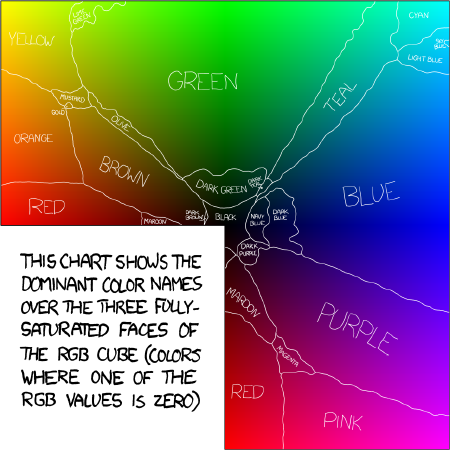When you look at a traffic light, what
colors can you name? Most people will say that the lights are red, yellow, and
green. However, Japanese people often will refer to the light as being blue in
color, not green. This has its roots in the history of the Japanese language,
as their word ao—until the modern
period—covered both green and blue. Ao
in Japanese comes from the dye plant, ai,
which as a dyestuff covers the whole of the blue-green portion of the spectrum.
Some cultures have what might at first
seem to be peculiarly chosen "basic" color names until you learn
their associations with the culture's central food sources or dye plants, or
precious commodities.
The color name that covers both blue
and green in many native languages of the American Southwest is also the name
for the stone, turquoise. You can be certain that, in cultures where a staple
food is poisonous when green and edible when red, there are separate names for
green and red. In our own history, we have a very similar example to the
"blue" traffic lights of Japan: "orange" didn't enter
English as a color name until the 16th century, after the fruit itself was
first brought to England, quite late in the evolution of our color vocabulary,
which is why we still refer to "red" hair. Berlin & Kay—early theorists of the order of evolution of color names—had to, at some point, translate the names their subjects gave to colors into English in order to assign them a place in their evolutionary chart. Often they did this using bilingual subjects, which is of course problematic, since they would already think or operate in two different linguistic color spaces. When they used dictionaries, how had the dictionary writer decided on the English equivalent of the color name?
Finally, most male English speakers can come up with eleven independent color names, but female speakers are far more likely to come up with dozens of color names without straining. Girls are culturally conditioned to be familiar with this terminology from an early age.
If you want to participate in a color naming experiment, visit colornaming.net, as the folks over there are trying to determine an online color naming model.


No comments:
Post a Comment